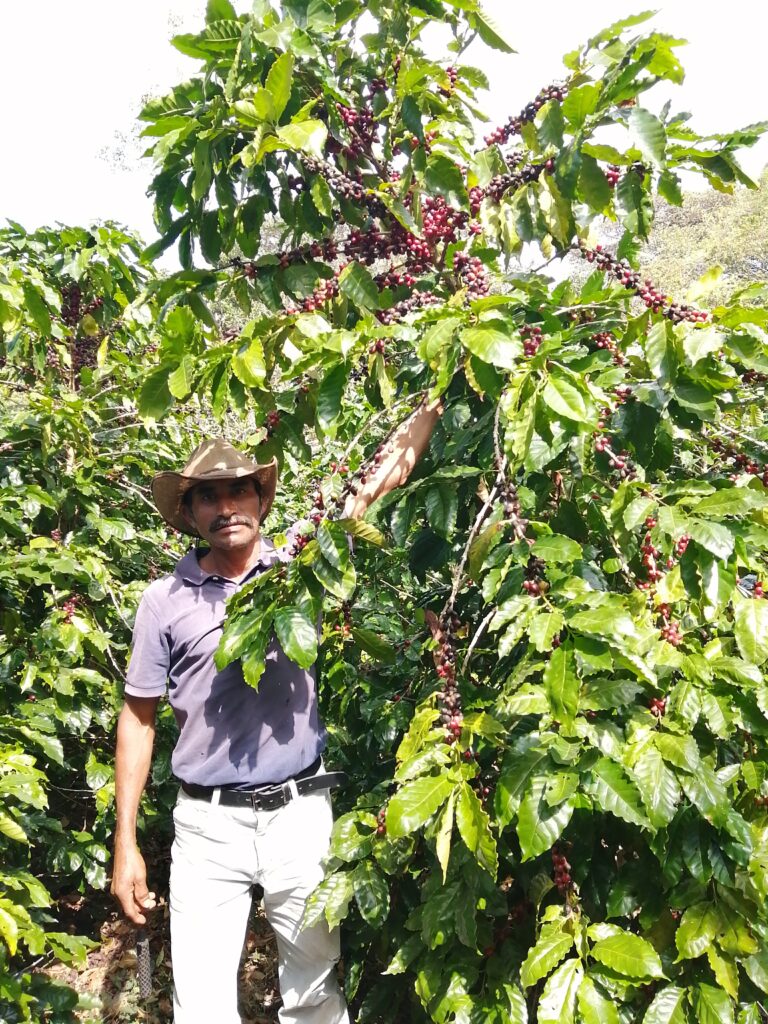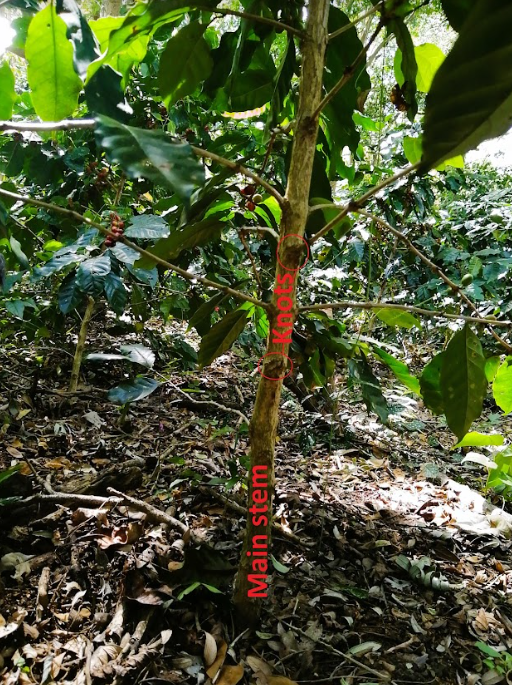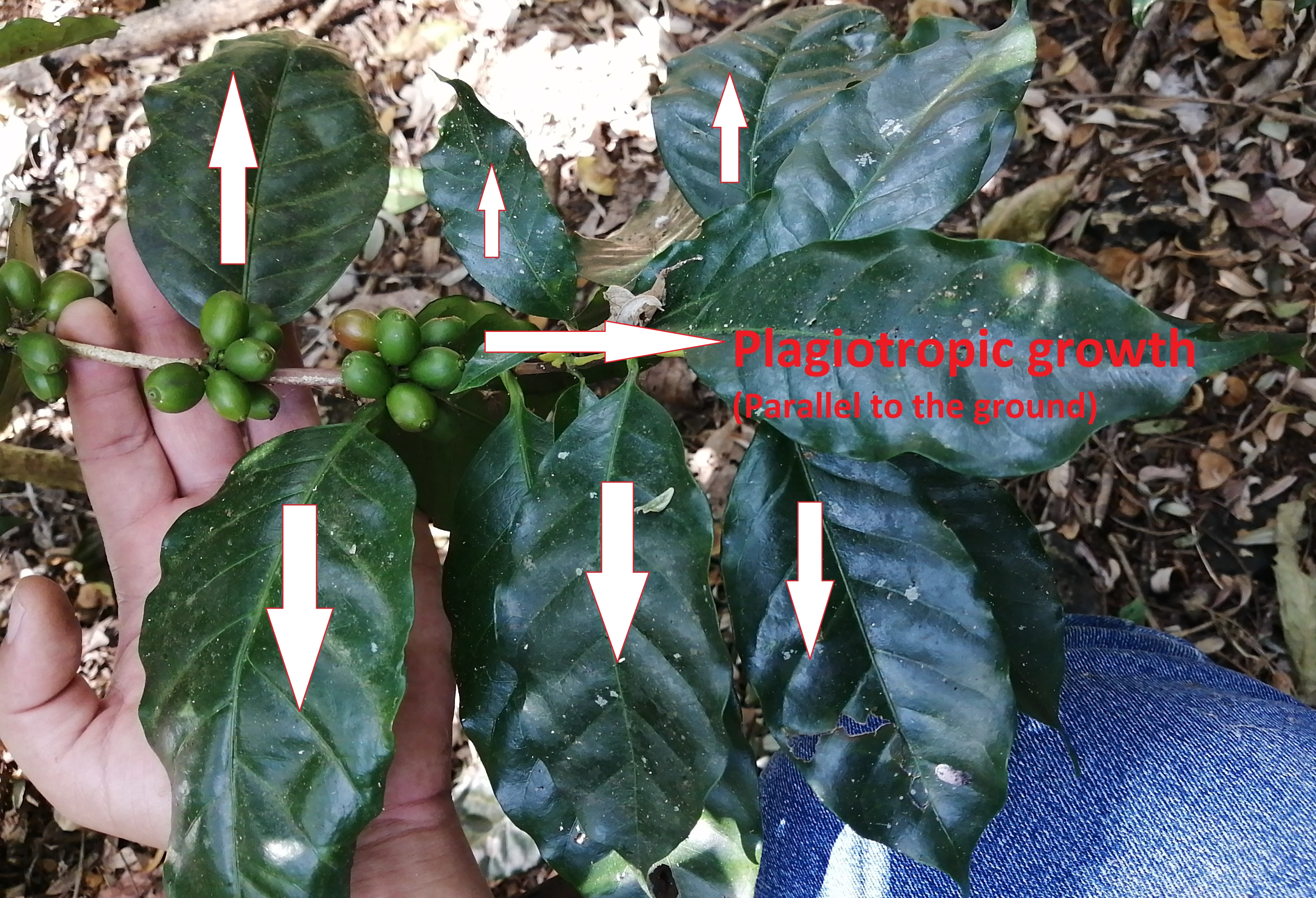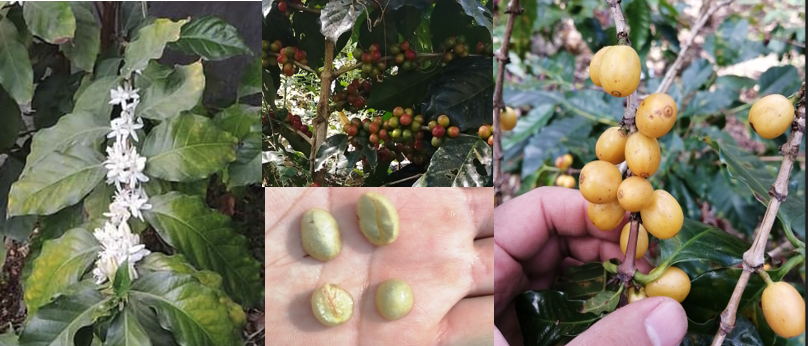Coffee Plant Information – What is the leaf morphology of Coffea arabica?

This post is also available in:
This post is also available in:
![]() Français (French)
Français (French) ![]() Deutsch (German)
Deutsch (German) ![]() हिन्दी (Hindi)
हिन्दी (Hindi) ![]() العربية (Arabic)
العربية (Arabic) ![]() Türkçe (Turkish)
Türkçe (Turkish) ![]() 简体中文 (Chinese (Simplified))
简体中文 (Chinese (Simplified)) ![]() Português (Portuguese (Brazil))
Português (Portuguese (Brazil)) ![]() polski (Polish)
polski (Polish)
Taxonomy of Coffee plants
- Kingdom: Plantae – plantes, Planta, Vegetal, plants
- Subkingdom: Viridiplantae
– Green plants
- Infrakingdom: Streptophyta
– Land plants
- Superdivision: Embryophyta
- Division: Tracheophyta – vascular plants, tracheophytes
- Subdivision: Spermatophytina – spermatophytes, seed plants, phanérogames
- Class: Magnoliopsida
- Superorder: Asteranae
- Order: Gentianales
- Family: Rubiaceae – madders, rubiacées. Genus Coffea L. – coffee
- Species: Coffea arabica, Coffea benghalensis, Coffea canephora, Coffea congensis, Coffea liberica, Coffea stenophylla.
Coffee Plant Morphology
Sometimes it can be confusing to talk about Coffea plants since they are part of the Rubiaceae family, including trees, bushes, and shrubs. They are quite bushy, and, at first sight, they look like a shrub or a very small tree. There is no consensus about which noun best describes these plants, and even though some associations use the term perennial shrub to refer to Coffea, we must keep in mind that in their domesticated state, they can reach a 4 m height, while in the wild, they can go up to 6 m (19.7 feet). So, as they tend to be bigger than a human, farmers refer to them as trees; we will use this same noun to describe their morphology, but it is okay to use them interchangeably.

Mr. Juan at 1.75 m (5.7 ft) tall, standing next to a 3 m (9.8 ft) tall Arabica tree. Oratorio, Santa Rosa, Guatemala.
Coffee trees are quite woody angiosperms, and they have a main stem that grows and develops from an apical meristem that then grows until it reaches its maximum height over a five to six-year period. However, pruning and stumping will give rise to secondary stems or sprouts. The stem is straight, with a conical (thicker base and pointed top); it also has knots all along, with a 5 to 15 cm (2 to 6 inches) separation between each other. Branches emerge from these knots.

4 year old coffee stem, Anacafe 90 variety (Catimor T-5175), Guatemala.
Needless to say, the stem is the most robust organ, as it can bear all the weight of its branches, leaves, and its fruit, yet it is also quite flexible, so once the coffee berries have fully ripened, it allows the tree to bend without breaking; at this point, when the fruit is red and full with its natural honey, up to 2.2 kg (4.8 lbs) of weight are added.

Arabica, Bourbon tree with ripe berries. The added weight of the coffee berries and their honey bends the tree.
The stem first experiences an orthotropic (vertical) growth that rises from the apical meristem as either suckers or sprouts. Branches with a plagiotropic (horizontal) growth come out from the knots of the main stem.


There are two types of vegetative buds that define the type of growth that each branch will experience. Suckers originate from serial buds found in the leaves axils, while horizontal branches come out of the heads of series buds. As mentioned before, at later stages of the plant’s life, pruning or stumping will cause the lower serial buds to develop new stems; serial buds also cause other branches to come out from the main branch, but they may also grow coffee berries.

Image adapted from LES BOURGEONS VEGETATIFS ET GENERATIFS DE COFFEA CANEPHORA Pierre, Paul Moens, 1968
As the tree grows, it develops various levels of plagiotropic branches; during their first year of life, they have between two to four levels. Depending on the variety, as they grow and with pruning management, they can grow between six to ten levels in total.
Coffee Flowers & Berries

From left to right: Inflorescence of Arabica coffee plant, Bourbon coffee bean (mid and up) Ancafe 14 coffee beans (mid and down), Caturra yellow coffee beans
As we can see in the taxonomy section, Coffea plants belong to the Rubiaceae Family of Flowering plants. Yes, coffee trees do have flowers, and they are essential not only because they eventually turn into berries but also because once they appear, farmers can get an idea of their crop yield; they will also mark when the crop is ready; nine months after bloom, arabica beans will be set to be collected, whilst for canephora, a farmer must wait for between ten to eleven months do to so.
It is important to mention that two or three flower blossomings might occur within a few weeks. This means that grains must be collected two or three times in total. As we will learn in a later article, coffee berries should be collected in stages.
Coffea arabica branches have between four to five pairs of serial buds in each knot. Approximately four flowers grow per bud, theoretically allowing up to 32 berries to develop on each knot. On the other hand, Coffea Canephora can develop between 15 to 25 berries per knot.
The berries have an ovoid or globular form; during their first stages of development, they are green and hard. However, once they are ripe, they soften and turn red or yellow, depending on the variety. Fully grown, they reach up to 15mm in diameter and 17mm in length. They are connected to the branch by a 2 to 5-mm petiole. Once the coffee beans have achieved physiological maturity, they soften and turn from green to red.
Roots
Finally, the root system is quite a complex one. Extending the roots from a single tree in a straight line could theoretically reach a 20km distance. Basically, there is a main vertical root that grows down, reaching a 50cm depth; then, you have axial roots that serve as support for the lateral roots. The main vertical and axial roots are in charge of firmly anchoring the whole plant to the earth. The lateral roots grow parallel to the ground and have rootlets that come from them. These last two are the ones that absorb up to 90% of water and nutrients from the earth, and they can do so in a 500m² range.
Cycles
Each country’s seasons, climates, and latitudes will determine when plants go through their vegetative growth and production cycles. Coffee plantations have particular cycles, and the time of the year these happen will depend on where in the world they are located. At lower altitudes, bean berries will ripen at a faster pace. For example, a crop in Central America is ready to be picked at a different time than another in South America or Oceania. Robusta trees will not be ready to be harvested at the same time as an arabica one, even if they have been planted next to each other.
Even though the location of each plantation will determine the time of the year for these cycles, we can summarize them in the following phases:
The phases mentioned above serve, of course, as a guideline; dates are never exact. I remember the first year I decided to take over my grandparents’ farm in 2018. It was a particularly warm year, and most of the trees on the plantation were quite old. That time we collected our crop between the last week of October and most of November. The year after was not as warm, and I collected the crop between mid-November and mid-December. This year, 2022, I am starting to collect my first coffee berries during mid-December, the rainy season was abundant, and in addition to that, most of my plantation has been renovated with young coffee trees. Their fruit takes longer to ripen than the old ones, and I estimate that I might finish collecting my crop between the first and second week of January. As climate change increases, I expect to see some changes in the production phases in the coming years.
| Phase 1 | Weeks 1 to 4: Flowers blossom, and the berries start to grow at a very slow pace. |
| Phase 2 | Weeks 5 to 11: The berries grow at a faster pace, their parchments begins to form, and the size of the grain is defined. |
| Phase 3 | Weeks 13 to 25: By far, the longest phase, around the middle of the third month, the berry stops growing, with its inside now fully formed. |
| Phase 4 | Weeks 26 to 31: The coffee bean hardens between the fourth and sixth months, and with the formation of the mucilage it now becomes a fully grown fruit. |
| Phase 5 | Weeks 32 to 39: The fruit turns from green to red or yellow (depending in its variety), and it is now ready to be picked. |
In a future article, we will get into specific details about seeds and germination. However, for now, we must keep in mind that six or seven months after having been in a nursery, the plants must be transported and planted in their final location. Once there, we must wait three to four years for the trees to start producing their first berries. However, they reach their top productivity levels between their fifth and sixth year.
References
[1]Coffea L.Taxonomic Serial No.: 35189, Integrated Taxonomic Infromation System report. ITIS – Report: Coffea
- Guía técnica de Caficultara, Ancafé, 2018 Edition p.17-23
LES BOURGEONS VEGETATIFS ET GENERATIFS DE COFFEA CANEPHORA pierre, Paul moens
https://www.itis.gov/servlet/ - http://www.coffeeresearch.org/coffee/coffeeplant.htm
- Educational program for development and conservation, Coffee morphology, CATIE, Costa Rica, 2007.
Coffee Plant Information – Morphology
Coffee Genetics and Variety Selection
How to Select, and Treat Coffee Seeds
Germination of Coffee Seeds and Creation of Seedbeds for Planting
Coffee Trees Planting and Plant Spacing
How to Prune your Coffee Trees in an Agroforestry System
Shade-Grown Coffee in an Agroforestry System
Coffee Tree Flowering and Pollination
From Rainwater Harvesting to Irrigation of Coffee Trees
Coffee Tree Fertilization Requirements
Weed Management in a Coffee Plantation








































































